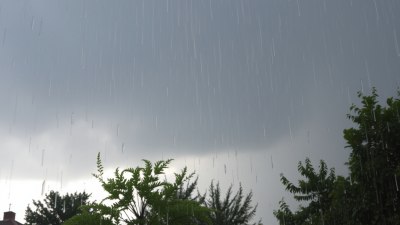Why Heat Makes Us Wild and Cold Makes Us Philosophers
Explore how temperature influences human behavior and thought, linking heat to impulsiveness and cold to contemplation.

Human behavior is deeply influenced by the environment, and temperature plays a crucial role in shaping how we act and think. The age-old observations that heat can make people agitated and cold can lead to introspection are not mere coincidences but reflect profound physiological and psychological processes.
Heat often leads to heightened aggression and impulsivity, making individuals more prone to wild behavior. Conversely, colder environments encourage calmness and philosophical thought, promoting deeper reflection and reasoned actions. This dynamic interplay between temperature and cognition has been studied extensively by psychologists, neuroscientists, and sociologists, who have sought to uncover why humans respond so differently to thermal conditions.
One primary explanation lies in the biological responses to temperature. When exposed to heat, the body undergoes various stress-related changes. Blood vessels dilate to help dissipate heat, which can lead to reduced cerebral blood flow, potentially impairing cognitive functions that regulate self-control and decision-making. This physiological state may contribute to increased irritability and reduced patience, prompting more impulsive and erratic behavior.
Moreover, heat increases the activity of the sympathetic nervous system, the part responsible for the 'fight or flight' response. This heightened state can result in increased agitation and spontaneous reactions rather than calm deliberation. The rise in core body temperature also affects neurotransmitter levels, including serotonin and dopamine, which influence mood and behavior. Changes in these chemicals under heat stress might exacerbate feelings of restlessness and aggression.
In social contexts, the effects of heat on aggression have been well documented. Studies reveal that higher temperatures correlate with increased rates of violence, such as assaults, riots, and conflicts. The famous 'heat hypothesis,' proposed by psychologists, posits that rising heat levels can cause a spike in violent acts due to the stress and discomfort caused by warmth. Urban environments during heatwaves often observe a surging tension among residents, reflecting this tendency.
On the other hand, cold environments tend to encourage slowing down, thoughtful consideration, and philosophical pondering. When temperatures drop, the body responds by conserving energy and reducing metabolic rate, which leads to quieter, less restless behavior. The cold prompts individuals to seek shelter and warmth, fostering solitude and calmness.
This environmental calmness manifests cognitively by enhancing one's capacity for reflection and abstract thought. Cold conditions reduce sensory distractions and physical discomfort associated with overstimulation, creating an ideal state for deep thinking. Historical records show that many philosophical and literary works were penned in colder climates or seasons, perhaps reflecting this heightened introspective tendency.
From a neurobiological standpoint, cold exposure can increase activity in brain regions associated with executive function and problem-solving. The relative comfort and clarity of mind derived from cooler surroundings may enable people to approach problems with greater logic and patience. The calming effect of cold can also modulate the limbic system, lowering emotional reactivity and promoting rational thought.
Culturally, various societies recognize the influence of temperature on mood and thought. For instance, the classical notion of the 'melancholic' temperament, linked with cool and dry conditions, associates calmness and contemplation, much like the philosophical mindset. Conversely, the 'choleric' temperament, linked with heat, aligns with fiery, passionate behavior. These ancient conceptualizations find modern support in scientific findings about temperature's impact on personality and behavior.
Environmental psychology further supports the connection between temperature and cognition. Experiments demonstrate that individuals in warmer rooms are more likely to make hurried decisions and exhibit aggressive tendencies, while those in cooler settings perform better on tasks requiring patience and complex reasoning. These findings emphasize the direct influence of ambient temperature on cognitive control and social behavior.
Additionally, seasonal affective patterns can also be explained by temperature. The winter months, characterized by lower temperatures and shorter daylight hours, spur increased introspection, creativity, and philosophical inquiry. The challenging conditions encourage humans to look inward and engage with abstract concepts, fostering intellectual pursuits. In contrast, summer's heat often encourages outdoor activity, socialization, and more immediate, less reflective actions.
Exploring the evolutionary basis for these reactions offers further insight. Early humans living in varied climates would have benefitted from different behavioral strategies: impulsiveness and rapid responses in heat to deal with immediate threats or competition, and measured, reflective decisions in cold to conserve resources and plan for scarcity. These adaptations likely became ingrained, influencing how modern humans respond to thermal stimuli.
Physiological mechanisms like the hypothalamic regulation of body temperature are intertwined with emotional regulation centers in the brain. The hypothalamus coordinates responses to thermal stress but also interacts with the prefrontal cortex and amygdala, areas responsible for planning and emotional processing. High heat may disrupt these pathways, diminishing self-regulation, whereas cold conditions preserve or enhance their function.
Furthermore, heat and cold affect hormonal balances that influence behavior. Heat stress can elevate cortisol, the stress hormone, leading to anxiety and irritability. In contrast, colder conditions can increase levels of serotonin, which stabilizes mood and promotes calmness. These hormonal fluctuations contribute significantly to the behavioral patterns observed under different temperatures.
In urban environments, this knowledge has practical applications. City planners and policymakers consider the psychological effects of heat and cold in public spaces to foster desired social outcomes. Green spaces with shade and cooling features are designed to mitigate heat stress, reducing aggression and promoting social harmony. Indoor environments strive for temperatures that optimize productivity and thoughtful interaction, avoiding extremes that could lead to conflict or reduced cognitive function.
The relationship between temperature and creativity is another fascinating aspect. Cold environments often stimulate creativity by inducing a state of focus and alertness necessary for innovation. Conversely, heat may limit creative potential by increasing impatience and reducing working memory capacity, essential for combining ideas effectively. Thus, temperature modulates the brain's ability to generate novel solutions.
Mental health also connects with thermal influences. Seasonal depression is more prevalent in colder months, suggesting a complex interaction between temperature, light exposure, and mood disorders. However, the introspective and philosophical tendencies fostered by cold can also provide therapeutic avenues, encouraging self-awareness and emotional processing.
Heat-induced agitation can have detrimental effects on interpersonal relationships, increasing misunderstandings and conflicts. Recognizing these patterns helps individuals manage their responses and cultivate self-control when confronted with uncomfortable temperatures. Simple interventions such as hydration, cooling, or relocating to cooler areas can mitigate the physiological triggers of wild behavior.
Interestingly, animal behavior studies mirror human responses. Many species exhibit increased aggression in heat, while cooler conditions promote calmer social interactions. These parallels underscore the deep evolutionary roots of temperature's role in behavior.
Historical examples further illustrate the impact of temperature on human affairs. Many conflicts and social unrest episodes correlate with periods of abnormal heat, suggesting that environmental factors can exacerbate tensions and lead to upheaval. Conversely, ages marked by harsh winters have often corresponded with flourishing intellectual and cultural developments, highlighting the adaptive advantages of cold-induced contemplation.
In literature, temperature often symbolizes emotional states. Heat frequently represents passion, anger, or chaos, whereas cold symbolizes reason, detachment, or sorrow. Writers intuitively capture human psychological responses to temperature through these metaphors, reflecting centuries of shared experience.
Modern research continues to uncover nuances in how temperature shapes cognition and behavior. Emerging studies utilize neuroimaging and molecular biology to detail the precise brain circuits and genetic factors involved, offering potential for targeted therapies for mood and behavioral disorders influenced by environmental conditions.
Technological advances allow for innovative climate control solutions that optimize human well-being, productivity, and social dynamics. Understanding the psychological implications of temperature guides the design of workplaces, schools, and public venues to encourage desired behaviors and mental states.
The phenomena where heat makes us wild and cold makes us philosophers serve as potent reminders of our intimate connection with nature. Despite modern comforts, the environment continues to influence our minds and actions profoundly. By acknowledging and respecting these forces, humans can better navigate their inner and social worlds.
Indeed, the duality between heat and cold offers a metaphor for balancing passion and reason, impulsivity and reflection, chaos and order. Both extremes have roles in the human experience, shaping how societies evolve, how individuals grow, and how cultures express themselves across time and space.
Ultimately, recognizing the impact of temperature on behavior enriches our understanding of human psychology and offers practical pathways for improving personal well-being and social harmony. Whether confronted with the wild impulses of heat or the contemplative stillness of cold, embracing these natural influences empowers individuals to harness their full potential.
Our primal responses to temperature reveal the complexity of human nature, where biology and environment intertwine to shape the spectrum of emotions and thoughts. From the fiery bursts of excitement under the sun to the quiet introspection beside a winter fire, temperature molds the dance of the human spirit.
Therefore, next time the heat seems to stir your wild side or the chill invites philosophical musings, remember these reactions are part of a deep evolutionary heritage that connects body, mind, and environment in an endless dialogue.











